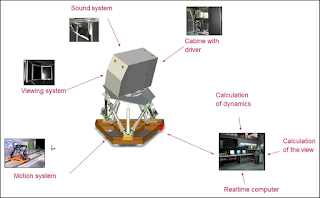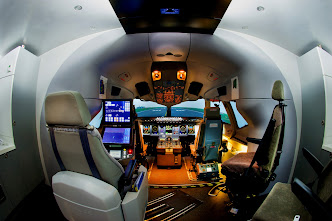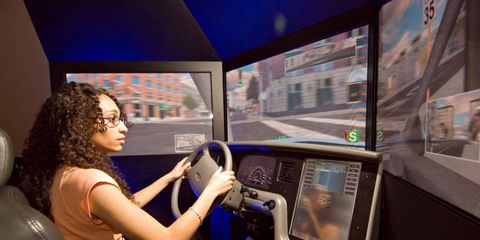What Are the Important Hardware Components of a Truck Driving Simulator?
An Automobile Training Simulator is intended for beginner and experienced operators of huge automobiles such as lorries, trucks, minibuses, and tanks. The simulator allows transportation company operators to be trained in real traffic situations and real-life advanced operating events while remaining completely secure. The Heavy truck driving simulator is a scale model of a realistic truck or trailer, complete with driving wheels, brake, clutches, throttle, paddles, indications, and controls. Simulation equipment and software can be configured for a variety of vehicle kinds, such as rigid vehicles, articulating trailers, lorries, tankers, and trailers, and they can be used in both left or right-hand steering nations.
Main Hardware Components of Truck Driving Simulator
Following are the crucial components of the truck driving
simulator:
Station for Drivers
Driving stations are a copy of the genuine automobile OEM
components including brakes, shift, gearbox, indicators, and haptic input
steering column are often utilized in designing the cabin. The tools, gauges,
indication lighting, and controls are shown on a customizable acrylic dashboard
with such an LED instrumentation screen, enabling for quick choice of multiple
vehicle layouts without replacing equipment. For a genuine sensation of
driving, the instruments are arranged in anatomically ideal areas. With
relevant software/hardware adjustments, all bus
driving simulators enable right-hand and left-hand driving.
With modification modules, the simulation could be set as universal to handle
numerous kinds of vehicles with the same equipment.
Method of Displaying
Drivers are immersed in actual driving scenarios owing to
the screen technology. Three big LED displays to show operating conditions in a
120° panoramic presentation. In the event of a full-scale simulation
installation delivering a 180° comprehensive screen, elevated projections for
frontal perspective and LCD panels for the rear mirror are utilized.
Motion System
TecknoSIM Driving Simulation models have an integrated
system and are organised which is both lightweight and low cost. The electrical
actuator offers feedback on automobile speed and braking, roadway curve, and
roadway impediments like curbs and holes, among many other things. The
oscillations of a vehicle's motor are recreated as a consequence of Speed. As
variations in the velocity of the automobile and roadway conditions, vibration
first from tyres on the roadway pavement alter.
Instructor Station
The operator station is in charge of the driver's school and
gives trainers the following features:
- · Keeping track of trainees and teachers in a system
- · Several emulators under the command
- · Additional activities are created.
- · In a training event, changing the surroundings
- · Using an ongoing session to introduce device flaws
- · The stored sessions can be recorded and replayed.
- · Reporting on achievement evaluations
- · Simulators need to be calibrated.
Conclusion
Realistic recreation of highways is provided by VR Training
Solutions for the Heavy Truck Driving Training. Roads, metropolitan
areas, and highlands with genuine climate factors make up the driving scenario.
The built-in learning and evaluation systems provide for methodical heavy truck
operator instruction. The simulation element is offered in three different
versions: desktops, VR, and full-scale simulation with mobility platforms.
Units could be modified to meet the needs of the client.




Comments
Post a Comment